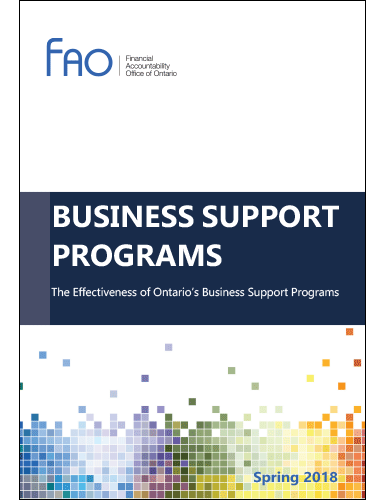The online version of the report will be published soon.
Business Support Programs

This report reviews how the Province measures the effectiveness of its business support programs.
Business Support Programs, Financial Accountability Office of Ontario, 2018.

